I’ve received some great comments about the trees on display at Redwood Empire Bonsai Society’s 28th annual show. As George Haas pointed out, the REBS event is a showcase for trees belonging to both new and experienced club members. As such, the show includes trees of differing quality at different stages of development. I think this is a great approach.
One of the most heartening moments in my bonsai history came when I realized how much Japan’s Kokufu ten has improved over the years. Individual trees frequently look better over time, and in general it’s easier to find fully developed trees in recent Kokufu exhibits than it is in Kokufu exhibits held over 30 years ago.
I’ve since noticed the same phenomenon in U.S. bonsai exhibits. Less ramified trees have become more ramified, and young deadwood has begun to age. This kind of improvement makes me more forgiving of trees at earlier stages of development, and it makes me more enthusiastic about our trees’ futures.
It also focuses me on identifying opportunities for improvement. The crape myrtle below has very interesting deadwood and very young branches. As the young branches develop and take on greater characteristics of age, the tree will become even more impressive.

Crape myrtle – 50 years
It can be hard to identify opportunities for improvement on trees that are already well-developed, but it’s not impossible. I imagine a number of us would love the opportunity to see if we could find ways of improving the compact bougainvillea below.
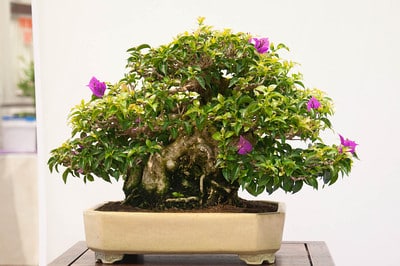
Bougainvillea – 45 years
The charming plum below is off to a great start. Time and continued development can only help.
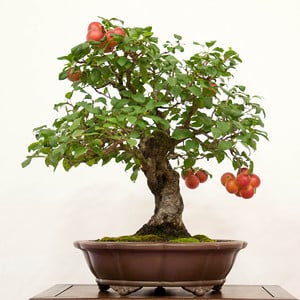
Plum – 20 years
Most of the trees on in the exhibit were displayed against light-colored backdrops. I like light colored backdrops because they provide good contrast for healthy bonsai foliage and they are great for photographs. Selected trees were displayed against folding screens – a nice touch.
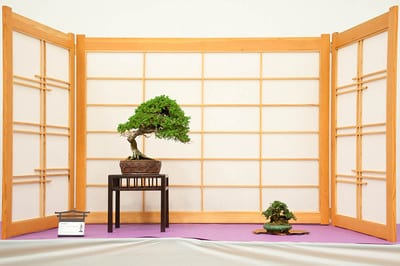
Juniper display
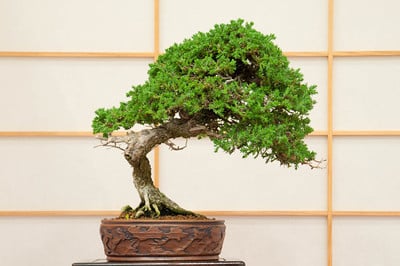
Procumbens juniper – 36 years
There were large trees and small, common varieties and rarities, scores of accents, and even a few suiseki. Here follows a selection of each.
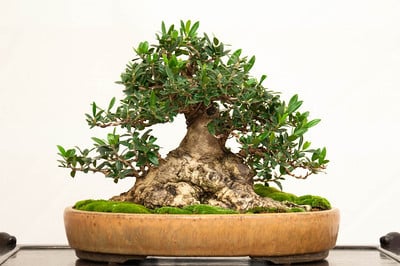
Olive – 50 years
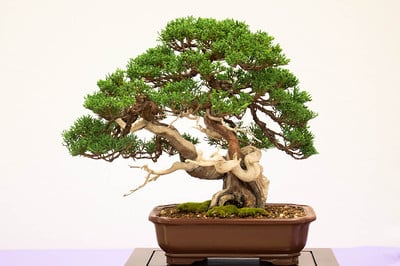
Juniperus chinensis ‘Blauii’ – 16 years in training
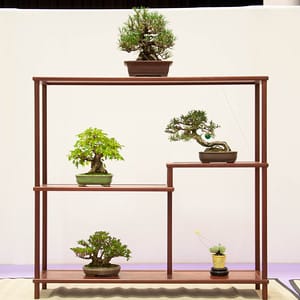
Shohin display
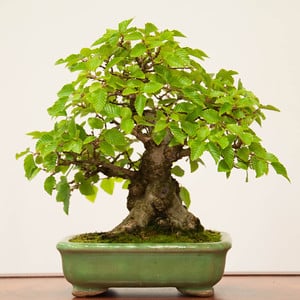
Hornbeam
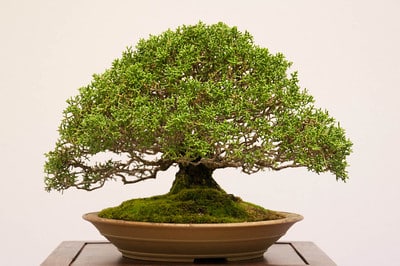
Mendocino cypress
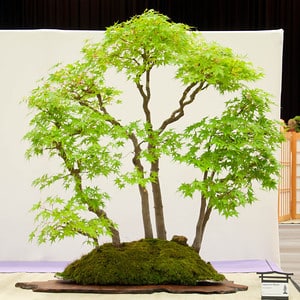
Japanese maple
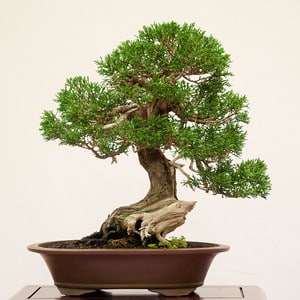
Juniper
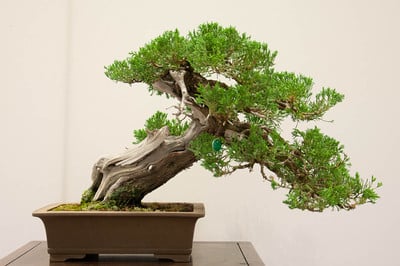
Juniper
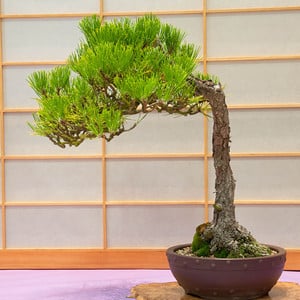
Japanese black pine
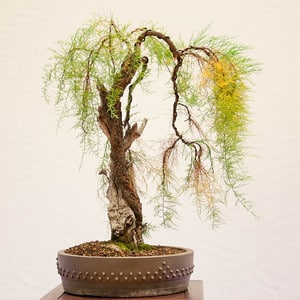
Tamarisk
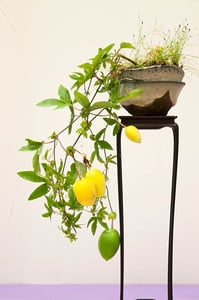
Passion fruit
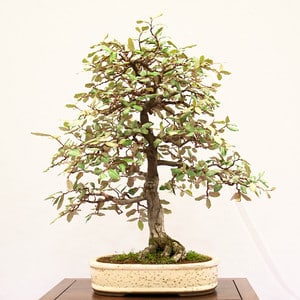
Silverberry – 25-35 years
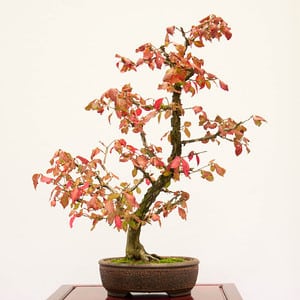
Winged euonymous – 12 years
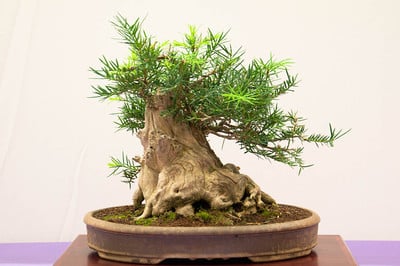
Nutmeg – 44 years
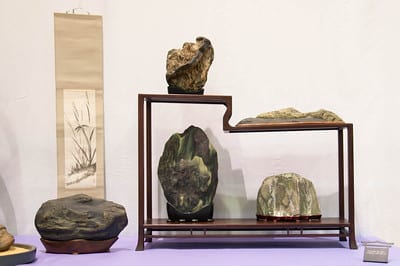
Suiseki display
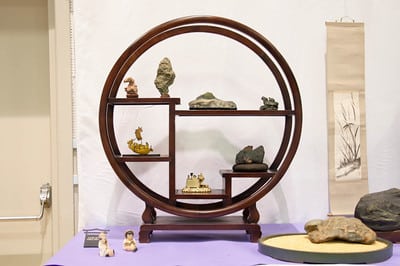
Suiseki display
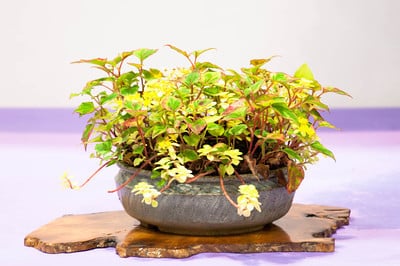
Accent
Subscribe to Bonsai Tonight
New Posts Delivered Every Tuesday and Friday